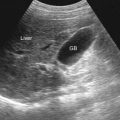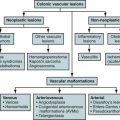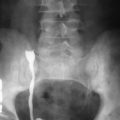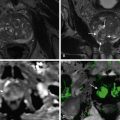Etiology
Fatty liver is a generic term that refers to the accumulation of lipids within hepatocytes. This chapter focuses on nonalcoholic fatty liver disease (NAFLD), the most common form of fatty liver. Histologically, it resembles alcoholic liver injury but occurs in patients who deny significant alcohol consumption. NAFLD encompasses a spectrum of conditions, ranging from benign hepatocellular steatosis to inflammatory nonalcoholic steatohepatitis (NASH), fibrosis, and cirrhosis. NAFLD is associated with obesity and insulin resistance and is considered the hepatic manifestation of the metabolic syndrome, a combination of medical conditions including type 2 diabetes mellitus, hypertension, hyperlipidemia, and visceral adiposity.
Other conditions associated with fatty liver include alcoholic liver disease, viral hepatitis, effects of certain medications (e.g., corticosteroids, tamoxifen, amiodarone, methotrexate, valproic acid, and select chemotherapy agents), human immunodeficiency virus (HIV) infection with lipodystrophy, total parenteral nutrition, pregnancy, and intestinal bypass surgery for weight loss.
The pathogenesis of NAFLD and its progression to NASH is complex and remains incompletely understood. The most widely accepted paradigm is the so-called two-hit hypothesis . In this model, the initial abnormality (first hit) is the accumulation of lipids within hepatocytes (steatosis), which is mediated by insulin resistance. The majority of hepatocellular lipids are stored as triglycerides, but other lipid metabolites, such as free fatty acids, cholesterol, and phospholipids, also may be present and play a role in disease progression.
The accumulated hepatocellular lipids promote oxidative stress, which is the subsequent insult (“second hit”) responsible for the progression from simple steatosis to steatohepatitis (NASH). Inflammatory and hormonal mediators secreted by adipocytes may contribute to the development of hepatic inflammation, apoptosis, and fibrosis.
Prevalence and Epidemiology
NAFLD is the most common form of chronic liver disease among adults and children in the United States and has been reported in many other parts of the world. It is thought to be the leading cause of asymptomatic elevations of serum aminotransferase values and likely accounts for the majority of cases of cryptogenic cirrhosis. Determining the prevalence of NAFLD, however, is challenging. This is because it is generally a silent condition, and liver biopsy, which is the gold standard for the diagnosis of NAFLD, is not a tenable tool for establishing disease prevalence in the general population. Consequently, serum levels of aminotransferases (alanine aminotransferase [ALT] and aspartate aminotransferase [AST]) and imaging studies (ultrasound and magnetic resonance [MR] spectroscopy) have been used as surrogate markers to estimate population prevalence in most series.
Depending on the cutoff values used to define the upper limit of normal for aminotransferase levels, the estimated prevalence of NAFLD in the general United States population ranges from 5.4% to 24%, but these values may be underestimations because aminotransferase levels have limited sensitivity for steatosis. Histologic estimates of NAFLD prevalence via preoperative or intraoperative liver biopsy, mainly obtained from individuals evaluated as donors for living-donor liver transplantation, are 33% to 88%. In children, NAFLD prevalence has been estimated to be 9.6%; of great concern, 2% to 8% of children with NAFLD progress to cirrhosis.
Obesity is the most important risk factor for NAFLD; the prevalence of NAFLD is 4.6 times greater in the obese, and up to 74% of obese individuals have fatty livers. Among morbidly obese patients undergoing bariatric surgery for weight loss, 84% to 96% have NAFLD, 25% to 55% have NASH, and 2% to 12% have severe fibrosis or cirrhosis. NAFLD is also strongly associated with hepatic and adipose tissue insulin resistance and metabolic syndrome. Although NAFLD is clearly linked to obesity and metabolic syndrome, it may occur in up to 29% of lean patients lacking associative risk factors.
Other factors that influence the development of NAFLD include age, sex, race, and ethnicity. The prevalence of NAFLD increases with age in both adults and children. NAFLD is more common among men than women younger than the age of 50; however, higher prevalence rates are seen in women older than the age of 50, perhaps related to hormonal changes occurring after menopause. The highest rates of NAFLD are seen among Mexican-Americans, followed by non-Hispanic whites. Non-Hispanic blacks display the lowest rates of NAFLD, despite the high prevalence of obesity and type 2 diabetes in this population.
Metabolic syndrome and its associated conditions are commonly affiliated with NAFLD. The prevalence of NAFLD is estimated to be at least twice as common among individuals who meet criteria for metabolic syndrome. Among individuals with NAFLD, it is estimated that over 90% have some features of metabolic syndrome. Diabetes is reported in 33% to 50% of patients with NAFLD, whereas insulin resistance may occur in as many as 75%.
Prevalence and Epidemiology
NAFLD is the most common form of chronic liver disease among adults and children in the United States and has been reported in many other parts of the world. It is thought to be the leading cause of asymptomatic elevations of serum aminotransferase values and likely accounts for the majority of cases of cryptogenic cirrhosis. Determining the prevalence of NAFLD, however, is challenging. This is because it is generally a silent condition, and liver biopsy, which is the gold standard for the diagnosis of NAFLD, is not a tenable tool for establishing disease prevalence in the general population. Consequently, serum levels of aminotransferases (alanine aminotransferase [ALT] and aspartate aminotransferase [AST]) and imaging studies (ultrasound and magnetic resonance [MR] spectroscopy) have been used as surrogate markers to estimate population prevalence in most series.
Depending on the cutoff values used to define the upper limit of normal for aminotransferase levels, the estimated prevalence of NAFLD in the general United States population ranges from 5.4% to 24%, but these values may be underestimations because aminotransferase levels have limited sensitivity for steatosis. Histologic estimates of NAFLD prevalence via preoperative or intraoperative liver biopsy, mainly obtained from individuals evaluated as donors for living-donor liver transplantation, are 33% to 88%. In children, NAFLD prevalence has been estimated to be 9.6%; of great concern, 2% to 8% of children with NAFLD progress to cirrhosis.
Obesity is the most important risk factor for NAFLD; the prevalence of NAFLD is 4.6 times greater in the obese, and up to 74% of obese individuals have fatty livers. Among morbidly obese patients undergoing bariatric surgery for weight loss, 84% to 96% have NAFLD, 25% to 55% have NASH, and 2% to 12% have severe fibrosis or cirrhosis. NAFLD is also strongly associated with hepatic and adipose tissue insulin resistance and metabolic syndrome. Although NAFLD is clearly linked to obesity and metabolic syndrome, it may occur in up to 29% of lean patients lacking associative risk factors.
Other factors that influence the development of NAFLD include age, sex, race, and ethnicity. The prevalence of NAFLD increases with age in both adults and children. NAFLD is more common among men than women younger than the age of 50; however, higher prevalence rates are seen in women older than the age of 50, perhaps related to hormonal changes occurring after menopause. The highest rates of NAFLD are seen among Mexican-Americans, followed by non-Hispanic whites. Non-Hispanic blacks display the lowest rates of NAFLD, despite the high prevalence of obesity and type 2 diabetes in this population.
Metabolic syndrome and its associated conditions are commonly affiliated with NAFLD. The prevalence of NAFLD is estimated to be at least twice as common among individuals who meet criteria for metabolic syndrome. Among individuals with NAFLD, it is estimated that over 90% have some features of metabolic syndrome. Diabetes is reported in 33% to 50% of patients with NAFLD, whereas insulin resistance may occur in as many as 75%.
Clinical Presentation
The natural history of NAFLD is poorly understood but seems to be related to the severity of histologic disease. In simple steatosis, less than 5% of patients progress to cirrhosis over a 5- to 17-year period; alternatively, 25% of patients with NASH advance to cirrhosis within 10 years. The rate of development of hepatocellular carcinoma is not well characterized but is thought to be lower than in viral liver disease.
Most patients with NAFLD are asymptomatic. When symptomatic, patients may experience malaise and nonspecific right upper quadrant discomfort. On physical examination, hepatomegaly may be detected. Patients characteristically have abdominal or visceral obesity. Those who progress to cirrhosis may exhibit stigmata of chronic liver disease and complications of portal hypertension.
Typically, NAFLD is discovered incidentally when routine laboratory studies reveal a mild to modest elevation in ALT (less than five times the upper limit of normal), although AST is also often elevated to a milder degree. Serum aminotransferase levels may fluctuate, however, and some patients with NAFLD have normal levels. A careful history should exclude significant alcohol use. Laboratory testing must exclude viral hepatitis and iron overload syndromes. Imaging can be used to noninvasively suggest fatty deposition. Although unnecessary to secure the diagnosis, a liver biopsy may provide staging and prognostic information.
Pathology
On gross inspection, the fatty liver is enlarged and soft, with a yellowish tinge and greasy consistency. Microscopically, the spectrum of fatty liver disease is assessed on the basis of steatosis, steatohepatitis, cell injury, and fibrosis. These histologic changes are often shared by alcoholic liver disease and NAFLD; at times, only a detailed alcohol history will distinguish the two diagnoses.
Steatosis is predominantly in the form of large-droplet (macrovesicular) fat, although small-droplet (microvesicular) fat and mixed patterns may be seen. Fat-laden hepatocytes are found primarily in centrilobular areas, with progression to a panlobular distribution in severe cases. Steatosis is assessed by visually estimating the proportion of fat-laden hepatocytes and reported in broad brackets of severity: normal (<5% of hepatocytes containing fat droplets), mild (5% to 30% of hepatocytes), moderate (30% to 60% of hepatocytes), and severe (>60% of hepatocytes).
When present, steatohepatitis is usually mild and characterized by a mixed inflammatory infiltrate of neutrophils and mononuclear cells (lymphocytes, macrophages, and Kupffer cells). In adults, the distribution is multifocal and may affect all zones of the liver lobule, which contrasts to the prominent portal inflammation seen in pediatric NASH.
The hallmark feature of cellular injury in fatty liver disease is hepatocellular ballooning, thought by some to be the most important defining criterion in distinguishing NASH from simple steatosis. Ballooning refers to swollen, enlarged hepatocytes with partially cleared cytoplasm, found mainly in centrilobular regions near areas of steatosis. Mallory’s hyaline (ropey clumps of dense perinuclear cytoplasmic deposits composed of intermediate filaments) and acidophil bodies (apoptotic or necrotic hepatocytes with eosinophilic cytoplasmic globules) can be seen in NAFLD, although they are more frequently observed in alcoholic liver disease.
In adults, fibrosis is mainly centrilobular, radiating outward from terminal hepatic veins in a perisinusoidal or pericellular pattern. This “chicken wire” appearance of fibrosis progresses in advanced disease, causing a bridging of fibrous bands and, ultimately, cirrhosis. In advanced disease (“burnt-out NASH”), there is a paucity of fatty deposition because the parenchyma has been replaced by fibrotic tissue. Pediatric fatty liver disease has distinct histologic features, such as predominance of periportal fibrosis, which is rarely seen in adults.
Several scoring systems have been proposed for histologic grading and staging of fatty liver disease. Recently, the Pathology Committee of the NASH Clinical Research Network proposed a NAFLD activity score (NAS) based on steatosis (0 to 3), lobular inflammation (0 to 2), and hepatocellular ballooning (0 to 2). In this system, NASH is probable if the NAS is greater than 4, unlikely if less than 3, and of intermediate probability if 3 or 4. Staging is based on the extent of fibrosis (0 to 4).
Differing patterns of steatosis arise in patients with hepatitis C infection or as a result of medication effects. In hepatitis C, macrovesicular fat droplets have a periportal, rather than centrilobular, distribution. The amount of steatosis increases with disease severity and is most commonly associated with genotype 3 hepatitis C virus. A number of medications lead to steatosis, including cytotoxic and cytostatic drugs, antibiotics, nucleoside analogs, and corticosteroids. The pattern of injury in drug-induced steatosis is nonspecific, typically consisting of macrovesicular fat deposits. Notable exceptions are Reye’s syndrome, associated with aspirin use in children, and tetracycline, both of which may lead to microvesicular steatosis.
Imaging
The radiologic features of fatty liver disease stem from the increased fat content of the liver parenchyma. The spatial pattern may be diffuse and homogeneous or heterogeneous, with focal fat deposition in an otherwise normal liver or areas of focal fat sparing in a diffusely fatty liver ( Table 38-1 ). The homogeneous form is the most common; the heterogeneous and focal forms may simulate perfusion abnormalities, diffusely infiltrative disease, nodular lesions, or masses. Such findings may be especially problematic in the setting of known malignancy. Therefore, it is important not only to recognize fatty liver on imaging but also to discriminate it from other pathologic processes.
| Spatial Pattern | Remarks |
|---|---|
| Diffuse and homogeneous | Most common form |
| Diffuse and heterogeneous | Ill-defined, geographic, segmental or lobar areas of fatty deposition |
| Focal deposition or sparing | Typically adjacent to falciform ligament, porta hepatis, gallbladder fossa, and subcapsular regions; speculated to be due to anomalous venous drainage and/or locally variable insulin effects |
| Multifocal deposition | Multiple round or oval nodular fat depositions in atypical locations |
| Perivascular | Halos of fat surrounding hepatic veins, portal veins, or both |
| Subcapsular | Seen in patients receiving peritoneal dialysis with insulin-containing dialysate |
The most important modalities used in the assessment of hepatic steatosis are ultrasound, CT, and MRI and MR spectroscopy ( Table 38-2 ). These modalities vary in their accuracy to diagnose and grade steatosis, as discussed later. To date, no noninvasive method reliably differentiates NASH from simple steatosis. Several MR techniques (diffusion weighted and perfusion weighted MRI, MR elastography, and double-contrast enhanced MRI) show promise for detecting and staging the severity of liver fibrosis, but these techniques have not been validated in large clinical trials and are considered experimental. Ultrasound elastography, particularly shear wave elastography, is also being studied for its ability to noninvasively detect early liver fibrosis. Elastography techniques are discussed in more detail elsewhere in this book.
| Modality | Diffuse Fat Deposition | Focal Fat Deposition | Focal Fat Sparing |
|---|---|---|---|
| Ultrasound |
| Hyperechoic area in an otherwise normal liver | Hypoechoic area within a hyperechoic liver |
| |||
| Unenhanced CT |
| Hypodense area in an otherwise normal liver | Hyperdense area within a diffusely low attenuated liver |
| Enhanced CT | Absolute liver attenuation <40 HU | Hypodense area in an otherwise normally enhancing liver | Isodense/hyperdense area compared with the liver parenchyma |
| Enhancement similar to background liver | |||
| MR spectroscopy | Spectral peak at resonance frequency of fat (e.g., methylene protons -CH2- at 3.2 ppm) | Not useful for focal fat deposition and/or focal fat sparing unless a multivoxel approach is used | |
| MRI |
| Focal area of signal loss on fat-saturated or out-of-phase image | Focal sparing of signal loss on fat-saturated or out-of-phase image |
Radiography
Plain radiography does not have a significant role in the assessment of fatty liver disease. Hepatomegaly and ascites may be appreciated in patients with early and advanced disease, respectively.
Computed Tomography
CT has been widely used in the evaluation of fatty liver disease in adults. The use of ionizing radiation precludes its use as a research tool in children, although fatty liver may be observed in children on scans done for clinical purposes.
Fat deposition in the liver is characterized by a reduction in the attenuation of the hepatic parenchyma. On unenhanced CT, normal liver parenchyma has slightly greater attenuation than the spleen or blood. However, with increasing hepatic steatosis, liver attenuation decreases and the liver may become less dense than the intrahepatic vessels, simulating the appearance of that on a contrast-enhanced scan ( Figure 38-1 ).
A subjective 5-point qualitative grading has been proposed for the degree of hepatic steatosis based on hepatic attenuation and visualization of hepatic vessels (hepatic and portal veins):
- •
Grade 1: Hepatic vessels show lower attenuation than the hepatic parenchyma out to the peripheral third of liver.
- •
Grade 2: Hepatic vessels show lower attenuation than the hepatic parenchyma out to the middle third of liver.
- •
Grade 3: Hepatic vessels show lower attenuation than hepatic parenchyma in the central third of liver.
- •
Grade 4: Hepatic vessels show the same attenuation as that of the hepatic parenchyma.
- •
Grade 5: Hepatic vessels show higher attenuation than the hepatic parenchyma.
Several criteria for the diagnosis of hepatic steatosis on unenhanced CT have been proposed. The first such criterion is an absolute liver attenuation of less than 40 Hounsfield units (HU). However, because the normal hepatic parenchyma attenuation ranges from 60 to 70 HU, the 40-HU cutoff value has high specificity but low sensitivity. Moreover, absolute attenuation values on unenhanced CT are subject to technical variations, such as scanner type. The second and third criteria attempt to overcome this limitation by expressing hepatic steatosis in relation to other organs known to be free of fat, such as the spleen. In these criteria (Hepatic Attenuation Index Criteria), an attenuation difference between liver and spleen of less than −10 HU and liver-to-spleen attenuation ratio of 0.9 indicate steatosis ( Figure 38-2 ). Liver attenuation may be affected by a variety of factors other than liver fat, such as iron, copper, glycogen, fibrosis, edema, or amiodarone use. Assessment of liver fat by CT attenuation may be unreliable, and CT methods are insensitive to mild steatosis. The reported sensitivity and specificity of unenhanced CT for detection of moderate or severe steatosis (>30% on histologic examination) ranges from 73% to 100% and 95% to 100%, respectively.
On enhanced CT, the presence of iodine contrast interferes with attenuation, adding a confounding factor. Perfusion alterations, timing of acquisitions, and contrast type, dosage, and injection rate may influence hepatic and splenic attenuation. Nevertheless, criteria have been proposed to detect hepatic steatosis at enhanced CT, including a liver-spleen attenuation difference of at least 20 HU between 80 to 100 seconds or at least 18.5 HU between 100 to 120 seconds after intravenous contrast injection ( Figure 38-3 ). Sensitivity and specificity of these attenuation differences range from 54% to 93% and 87% to 93%, respectively. Ultimately, however, the quantitative criteria for diagnosing fatty liver at enhanced CT are protocol specific and have significant overlap of liver-spleen attenuation values between normal and fatty liver, thereby limiting its clinical role.
On CT, focal hepatic steatosis appears as a hypodense area in an otherwise normal liver, whereas focal fat sparing appears as a hyperdense region within a liver of diffuse low attenuation ( Figures 38-4 and 38-5 ). Focal fatty changes (either infiltration or sparing) typically occur at classic locations, namely, adjacent to the falciform ligament (typically in segment IV), within the gallbladder fossa, in the subcapsular liver, and in the region of the porta hepatis. Although areas of focal fat deposition and focal fat sparing are usually geographic in shape and occur at these specific locations, they can be nodular or occur in an atypical region, raising concern for a true hepatic mass. Other characteristic features include geographic margins, absence of mass effect, and nondistortion of the portal and hepatic venous branches traversing through regions of fat deposition or sparing.









